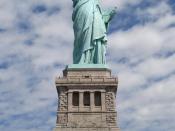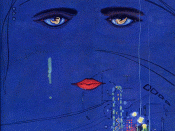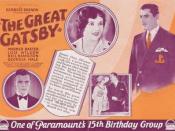"The Great Gatsby" demonstrates how the Buchanans and Jordan Baker embody the excess of the 1920s- 30s via the use of a variety of language techniques. The 1920s- 30s was an era dubbed the "Jazz Age" and it was a time largely concerned with the American Dream, characterised by people having material success as their ultimate goal.
Through their dialogue, a moral rootlessness is expressed. It is clearly seen when Daisy speaks of her daughter, "I hope she'll be a fool - that's the best thing a girl can be in this world, a beautiful little fool" which implies that Daisy has a collapse of principles whereby she does not value such things as intelligence but rather only superficial matters. Also, it gives the impression that Daisy sees her daughter as an appendage that will not grow up to pursue her own happiness but that of others. Furthermore, her absurd speech after she is plainly aware of Tom's infidelity, "There's a bird on the lawn..."
suggests she has a lack of morality.
The East Eggers are purposeless and stagnant since money has taken care of their needs. The rhetorical, "Do you always watch for the longest day of the year and then miss it? I always watch for the longest day and miss it" shows Daisy's aimlessness and exemplifies her shallow personality as it is inane. Sadly, it also implies that the lives of East eggers are empty because they are unaware that life is passing them by. Phrases such as "Tom's getting profound" and "He reads deep books with long words" juxtaposed with "an expression of unthoughtful sadness" to signify that Tom is as empty as Daisy. Repetition of "all scientific" further accentuates the said purpose. Comparatively, the description of Daisy and Jordan Baker, "as cool...


